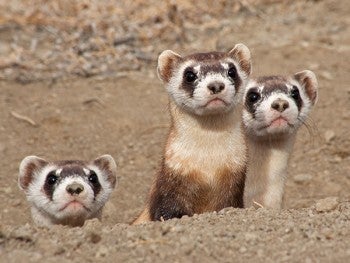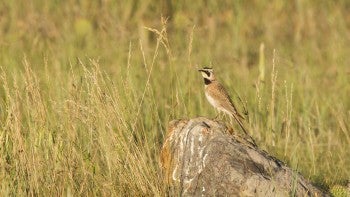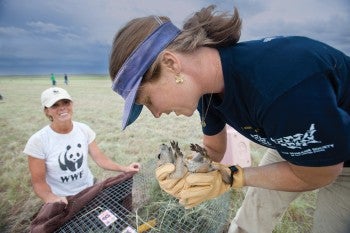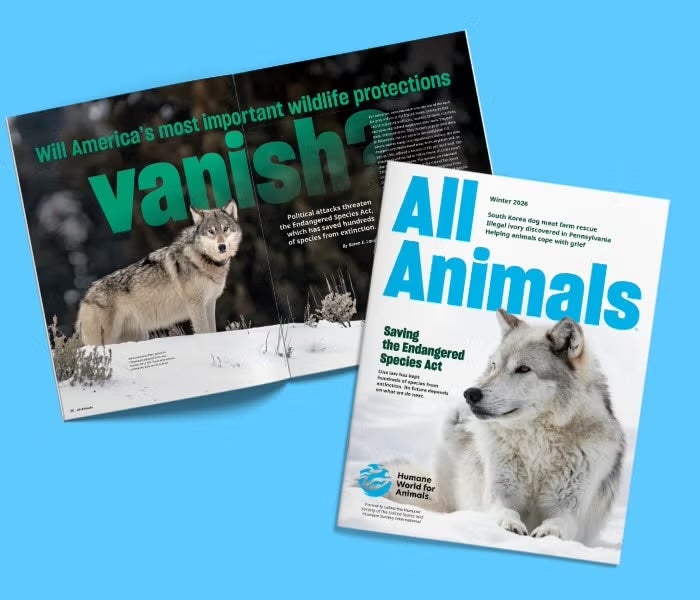Ask any animal lover about prairie dogs and they’ll probably smile, imagining the small mammals standing on their hind legs and surveying the grasslands. They’re undeniably cute, but they’re also contentious. In fact, prairie dogs have been labeled one of the most controversial and widely misunderstood wildlife species in North America.
Lindsey Sterling Krank, program director of prairie dog conflict resolution at Humane World for Animals, hopes that will change. Slowly society has been re-examining why we view certain species as pests. Over the past few years, beavers have evolved from “nuisances” to vital players in protecting wetlands. Prairie dogs play a similar role in North America’s grasslands—one of the most endangered ecosystems in the world—but they’re struggling to shed their bad reputation.
Evolving threats to prairie dogs
Before 1800, billions of prairie dogs lived on the Great Plains spanning from the north, in what is today Canada, to Mexico in the south. That changed after European settlers began to colonize the American West in the late 1800s, converting Indigenous land for agriculture. Prairie dogs were seen as pests who competed with cattle for grass to graze and were killed in massive numbers. Making matters worse, in the early 1900s, humans brought plague into the U.S. through ships with infected rats on board. Plague reached prairies shortly after and has continued to hit prairie dog populations hard since then. Because prairie dogs live in close-knit communities, plague outbreaks can quickly spread and kill off entire colonies.
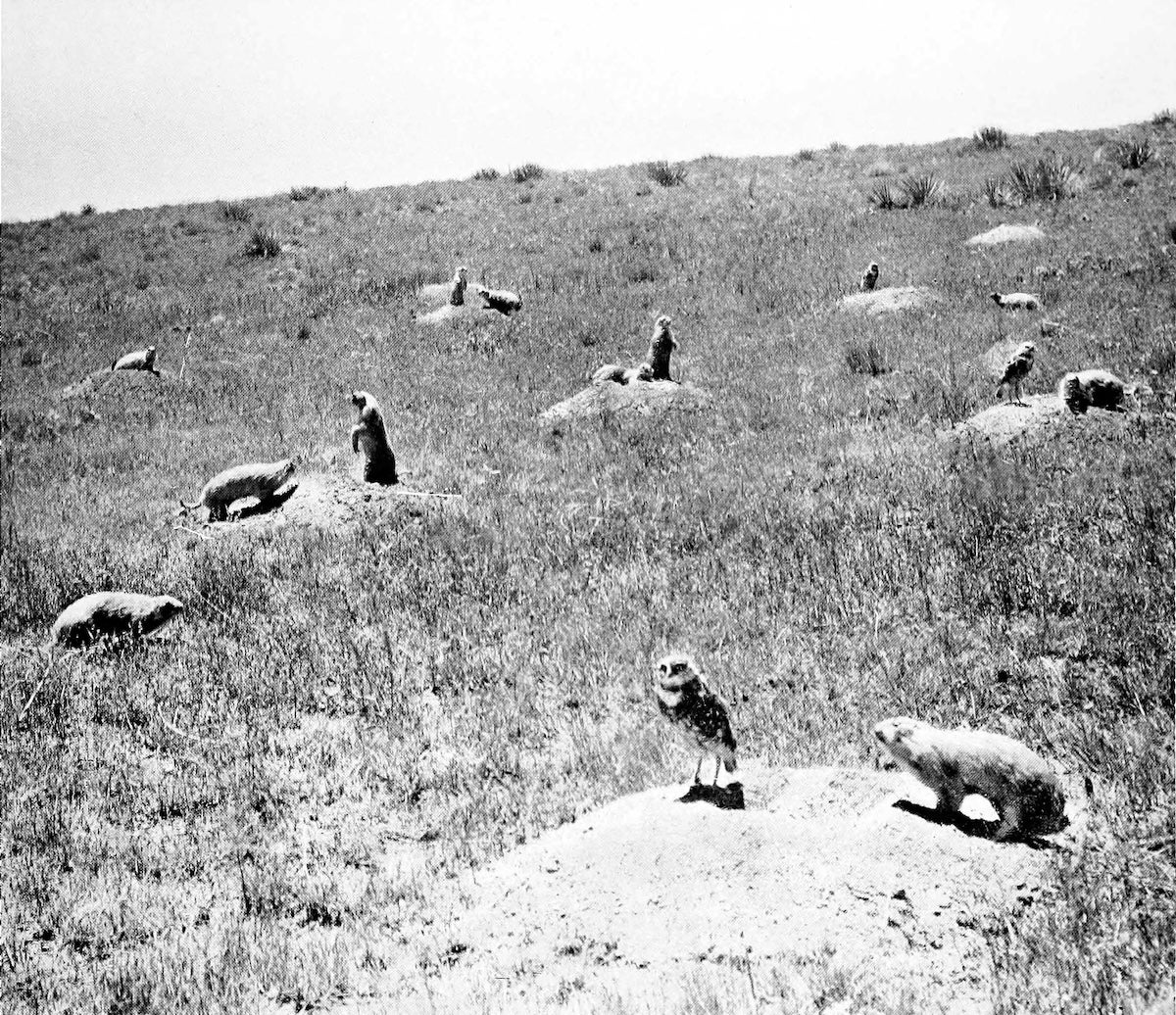
Allen G. Wallihan/Hoofs, claws and antlers of the Rocky Mountains, by the camera. Photographic reproductions of wild game from life
Today, prairie dog populations have declined an estimated 87% to 99% depending on the species. Two of the five species, the Utah prairie dog and Mexican prairie dog, are endangered. Grasslands continue to be rapidly converted for agriculture and development, and prairie dogs now inhabit less than 5% of their historic range. Climate change is shrinking their habitat even further as the southern part of their range becomes too dry. And while the Utah and Mexican prairie dogs are protected under national laws in their home ranges, other populations are still being lethally controlled through shooting, poisoning and even wildlife killing contests.
Much of the current tension between prairie dogs and people occurs on western public lands where ranchers commonly leave farm animals out to graze, says Sterling Krank. Many ranchers still view prairie dogs as competing with cattle for grass and think their burrows pose a tripping hazard for the bovines. Landowners may also dislike prairie dogs because of the dirt patches they create. And the association of prairie dogs with plague that killed millions of Europeans in the Middle Ages can heighten negative views.
But Sterling Krank emphasizes that prairie dogs and cattle can share the landscape. Some studies even suggest cattle prefer to graze on prairie dog towns because the native rodents encourage the growth of nutritious plants. Droughts, which are becoming increasingly severe due to climate change, are a major factor in reducing the availability of grazing grasses. During years with normal to high levels of rain, “usually there's very little to no competition between livestock and prairie dogs,” says Ana Davidson, a research scientist at Colorado State University.
Prairie dogs are vital players
Far from being destructive pests, prairie dogs play a crucial role in their ecosystem as both a keystone species and ecosystem engineers. Keystone species play a disproportionately large role in maintaining the functioning of their ecosystem. Without them, their ecosystem would change substantially. Ecosystem engineers modify the availability of resources for other species.
Remarkably, around 170 species benefit from prairie dogs’ services.
Prairie dogs create and engineer a diverse landscape that attracts a wide range of species. “You can kind of picture a prairie dog colony representing this island of unique open grassland habitat dotted with these burrow systems and surrounded by a sea of grass,” says Davidson.
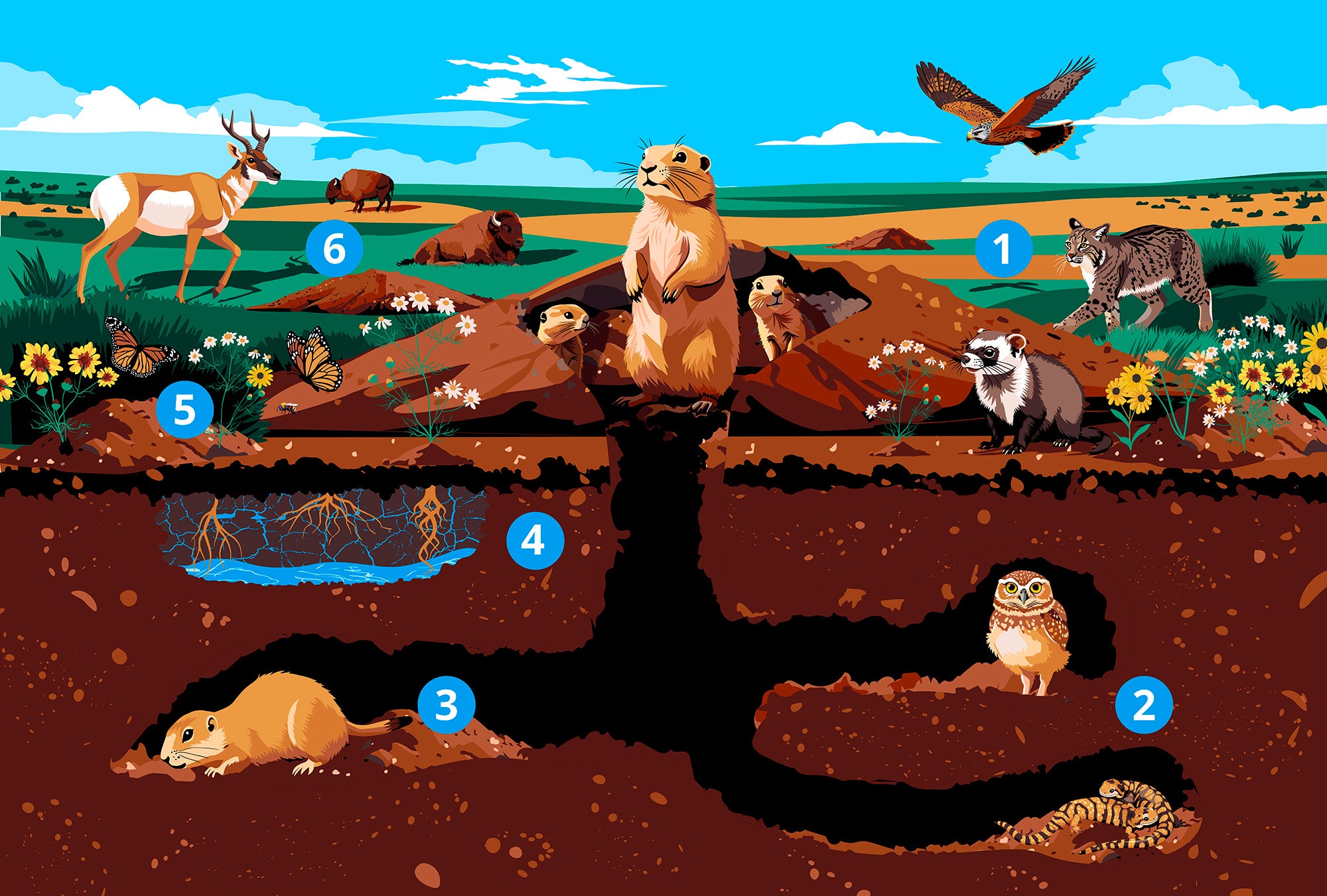
Illustration by Rachel Stern
1. Animals like raptors and bobcats eat prairie dogs. In fact, prairie dogs compromise around 90% of black-footed ferrets’ diet.
2. Prairie dog tunnels provide habitat for burrowing owls, tiger salamanders, endangered black-footed ferrets and many other species.
3. Through their digging, prairie dogs aerate the soil and redistribute nutrients.
4. Prairie dog burrows allow water to penetrate the ground and help prevent the land from becoming degraded.
5. Through their grazing, prairie dogs encourage the growth of flowers, which provides food for pollinators.
6. Prairie dog grazing encourages new, nutritionally dense grasses to grow, attracting grazers like bison and bighorn sheep to the area.
For the birds, for the ecosystem
Prairie dogs also provide vital services to grassland birds, who are declining more rapidly than any other group of birds in North America. As apex predators, raptors such as golden eagles, bald eagles and hawks eat prairie dogs. “If we're losing prairie dogs, that's going to have knock-on effects on raptors in terms of them being able to find enough prey to support their young, to support themselves," says Andrew Dreelin, an ornithologist and fellow at the Smithsonian Great Plains Science Program.
Mountain plovers—a bird species that has dwindled by over 80% since the mid-1960s—lay their eggs on the dirt patches created by prairie dogs and eat the insects attracted to prairie dog scat. The decline in prairie dog populations is considered one of the major threats to plovers.

